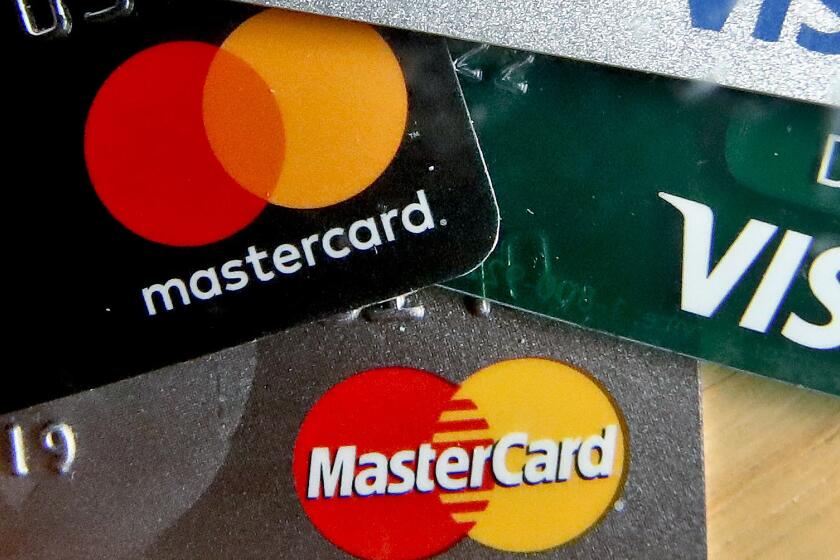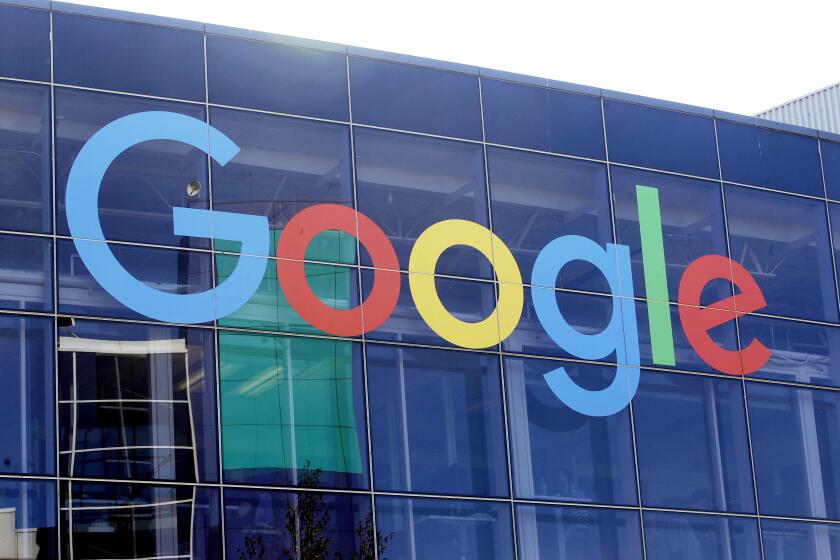Fare Play
- Share via
Even as Planet Hollywood and Rainforest Cafe struggle to resuscitate stalled revenue and share prices, the roster of entertaining eateries continues to grow.
Game plans at the National Basketball Assn. and the National Football League now include chains where patrons can pass, kick, dribble and dunk along with eating meals and buying memorabilia. Gibson Music Corp. plans a chain of museum-cafes styled after a prototype near its Nashville headquarters.
The new attractions are designed to sate growing consumer demand for entertaining ways to spend time and money. But there’s another powerful force behind the wave of attractions that blend eating, retailing and entertainment.
“What’s driving it are the developers and entrepreneurial retailers who all want to incorporate these different forms of entertainment into their developments,” said Michael Rubin, a Philadelphia-based consultant working with the NFL on the design of its chain.
As competition increases, there’s growing evidence that expensive concepts that play well in glitzy tourist centers like Las Vegas and Orlando, Fla., may have trouble turning profits in secondary markets.
“The speculation in the industry is that, yes, these concepts can be scaled down for smaller, less media-intensive markets,” said Michael D. Beyard, coauthor of a new book about entertainment centers. “But the centers aren’t open yet so there’s no proof that they will translate well.”
Jaded consumers are also demanding that old favorites keep their offerings fresh. “When you introduce the 101st Planet Hollywood into some place like Kansas City, there’s a real question of whether consumers are going to view it as something authentic or exciting,” Rubin said.
*
Themed eateries promise something for everyone.
Club Kokomo is a Beach Boys-backed venture that takes its name from one of the group’s hit singles. Los Angeles-based Country Star Restaurants Inc. boasts strong ties to country entertainers. Tinseltown Studios, a dinner theater proposed by Ogden Entertainment, combines dining with interactive live entertainment and film clips.
But the new eateries aren’t cheap to build. Rainforest Cafe spent more than $6 million on its restaurants, and Ogden is budgeting $15 million to create the illusion that its customers are Hollywood stars.
And, industry experts say, costs will continue to be driven up by the rapid influx of virtual reality technology. At the same time, traditional retail stores are scrambling to incorporate entertainment into their stores--during an Urban Land Institute seminar next week in New York, Woolworth Corp. will report on plans to make its store aisles more entertaining.
But as the competition for consumers’ dollars escalates, some chains are faltering. Late in January, Planet Hollywood blamed newcomers for contributing to a fourth-quarter loss that knocked the company’s stock to a yearly low of $6.75.
Planet Hollywood’s unexpected loss underscores a common problem in the industry. Restaurants typically depend heavily on repeat business, but themed entertainment relies on one-time visits by tourists.
“Novelty is OK for one visit, but these places have to offer something to keep people coming back,” Beyard said. “There is no such thing as brand loyalty anymore. If customers don’t like something, they’ll quickly move on.”
Rainforest Cafe, which is also struggling to bolster repeat business, was recently sued by disgruntled shareholders who complained that the company didn’t tell investors that “the life cycle of its restaurants was such that sales would decline significantly after a restaurant’s grand opening.”
The chains maintain that they’re working hard on building repeat business. Planet Hollywood is revising its menu, accepting reservations and emphasizing group sales--all tactics designed to bring customers back.
In addition to opening more eateries, operators of themed restaurants and attractions are trying to broaden their revenue base by leveraging their popular brand names or finding new ways to use their operations expertise.
Many chains are expanding overseas. During an Urban Land Institute seminar in Zurich, Switzerland, in late January, an overflow crowd heard from executives at Universal Studios, Sony, IMAX and others.
*
Planet Hollywood is experimenting with Planet Movies, a joint venture with AMC Entertainment Inc., the Kansas City, Mo.-based movie theater operator. Planet Hollywood also is retooling its four-unit Official All-Star Cafe chain, which features sports-related entertainment and dining.
Hard Rock Cafe last year opened a luxury hotel in Las Vegas that Chief Executive Jim Berk described as part of a broader plan to leverage the chain’s now-familiar logo. The chain plans to open several of the upscale lodgings, including one in Southern California.
“This brand is 26 years old, and until the hotel opened, it had never broadened beyond our core concept,” Berk said. “What we’re doing now is looking for things out there that will reinforce our core brand and allow us to pursue aggressive growth.”
One of Hard Rock Cafe’s most important expansion gambles won’t have the company’s familiar logo attached. Hard Rock Cafe in January agreed to spend $90 million to develop and run a chain of restaurants for the NBA. The NBA plans to open restaurants in Orlando and Los Angeles--and another 10 or so overseas.
Opening more Hard Rock Cafes is not an option because the chain limits its restaurants to one per city in order to avoid saturating its markets. The NBA license, Berk said, will position the company to become more efficient.
“This is a way for us to leverage our operations,” Berk said. “And the NBA was a logical choice for us because they’re a worldwide brand, and they want to establish themselves with a physical presence in places like Rio, Tokyo and Paris.”
As the NBA starts its fast break into the restaurant business, the NFL is kicking off a chain that’s patterned after the NFL Experience.
NFL officials maintain that their themed attraction is more than an eatery. “To the extent that it’s possible, we’re going to re-create the NFL Experience for our fans,” said Gary Gertzog, a senior vice president with NFL Properties. “This has been on our drawing boards, but we’ve been waiting for technology to catch up with our concept.”
Although the 40,000-square-foot prototype in New York, to be followed by locations in Los Angeles and other major markets, will rely heavily on technology, it also will emphasize social interaction.
“Social is an important word here,” said Peter S. Rummell, a former Walt Disney Co. executive who’s now chairman of St. Joe Corp., a Jacksonville, Fla.-based company that has signed on as a joint-venture partner with the NFL. “It isn’t going to be 100% whiz-bang technology. There has to be an interactive element, and I’d bet a drink that some of the more successful things we incorporate will be kind of dumb but fun.”
Recognizing that it’s no longer enough to simply offer high-priced burgers and shelves filled with expensive paraphernalia, operators are looking for competitive edges.
*
As the concepts evolve and consumers demand more from operators, there’s a growing recognition that content is king. So the NFL will use its vaunted collection of game films to draw customers and the NBA will repackage its proprietary collection of live action film and interviews.
It’s the same in entertainment. Hard Rock Cafe is building venues to stage live performances by hot artists, and will beam those shows live to sister clubs around the planet.
Planet Hollywood recently dispatched a top executive to Hollywood where he’s charged with luring more famous movie faces--particularly young up-and-comers--into the cadre of stars who lend their personas to the chain’s marketing campaign.
The chains proposed by the two professional sports leagues also underscore a widening division in the entertainment industry. The NBA describes its venture as a restaurant chain that offers entertainment and retail; the NFL in contrast argues that it’s venture will be much more than a restaurant--that it will incorporate the look and feel of a football stadium.
“Too often at these themed restaurants the food is average at best--typically it’s expensive and the experience is static,” Rummell said. “How often, after all, can you look at Arnold Schwarzenegger’s coat?”
What all the operators seem to be chasing is what consultant Rubin describes as “an engaging social experience.”
“There’s never been a replacement for the old-fashioned bowling alley,” he said. “Pump up the entertainment and technology too high and you’ve got a passive event, not a communal experience. And, for most people, that’s going to translate into a one-time visit.”
(BEGIN TEXT OF INFOBOX / INFOGRAPHIC)
What’s Cooking?
What’s for dinner is a question that’s increasingly decided late in the day. More than half of all Americans don’t know what’s on the menu until after 4 p.m.
What time do you decide what to eat for dinner?
4:01 to 5 p.m.: 13%
5:01 to 6 p.m.: 25%
6:01 to 7 p.m.: 17%
7:01 to 8 p.m.: 13%
8:01 to 9 p.m.: 3%
All other times: 24%
Note: Numbers don’t add up to 100% due to rounding.
Source: Restaurants & Institutions magazine
More to Read
Inside the business of entertainment
The Wide Shot brings you news, analysis and insights on everything from streaming wars to production — and what it all means for the future.
You may occasionally receive promotional content from the Los Angeles Times.










